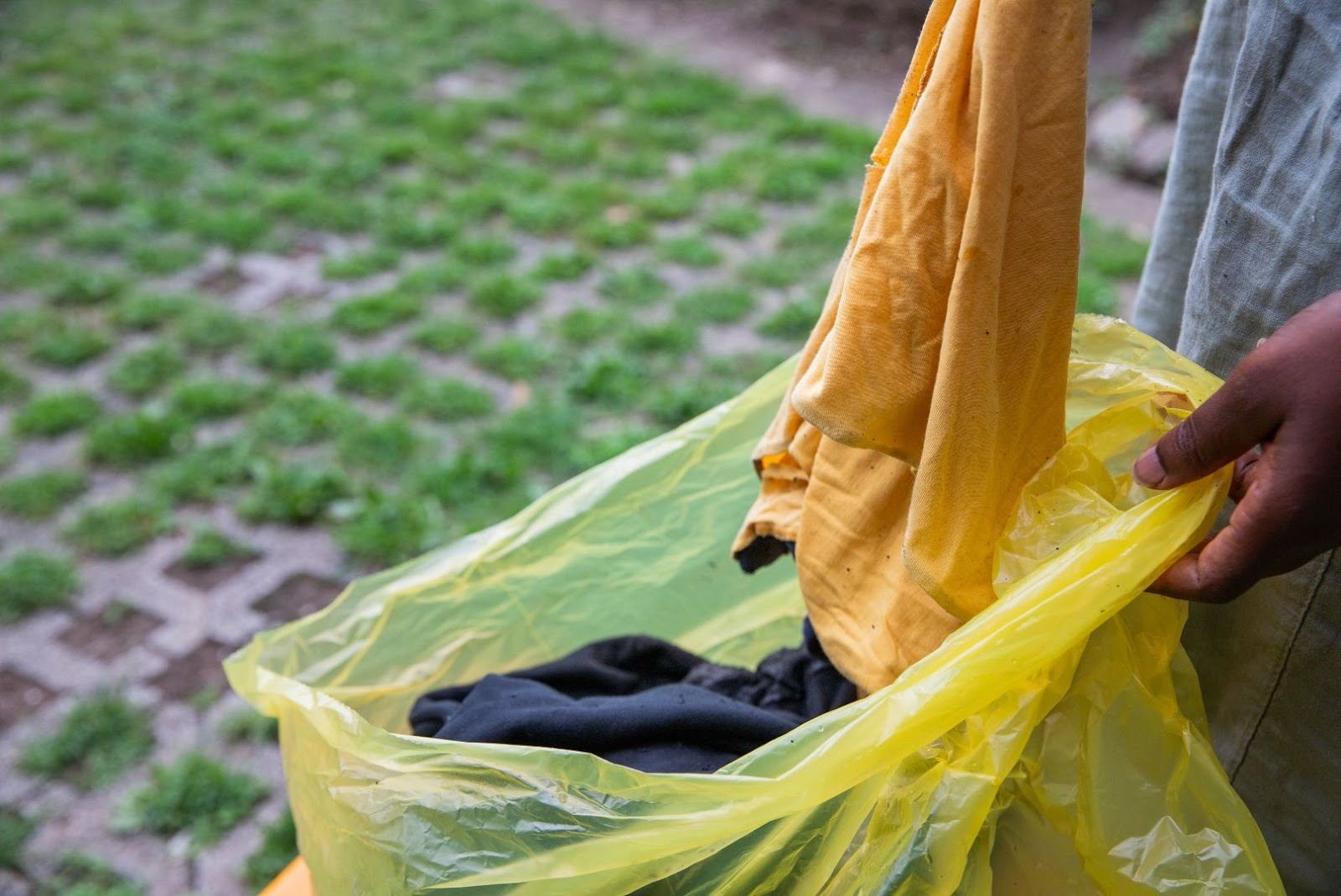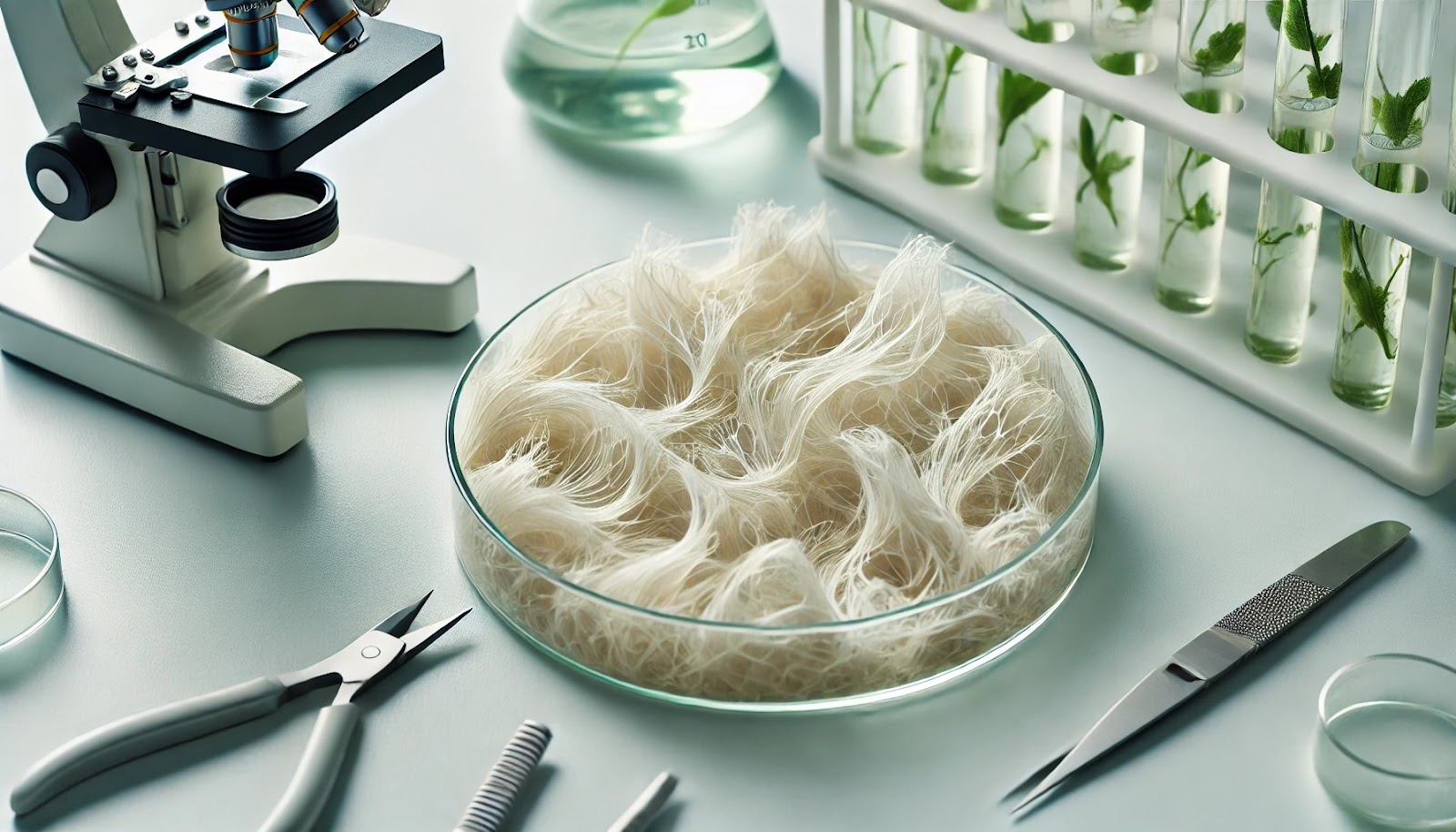Thread Lightly: Biofabrication and the End of Fast Fashion
Amidst the ecological fallout from fast fashion's disposable culture, innovators are turning to microbes to create durable, eco-friendly fabrics that challenge traditional manufacturing
Nov 12, 2024
[Ideogram]
In my closet hang several garments lovingly transported here from Canada that I'd never dream of giving away or (heaven forfend) chucking in a landfill: Silk dresses and sharp houndstooth patterned suits that belonged to my great grandmother, treasured and irreplaceable. Jackets, dresses, and skirts my mother herself made with her Toronto label “From Rags to Bitches” in the 1970s - all without a stitch out of place, as they were built to last. Precious outfits were once just that: precious, purchased with the intent of being worn for years, even decades.
But in our turbo-charged disposable economy, a new garment is typically worn just ten times or less, frequently discarded in less than a year, only to be replaced with more transient items that will be replaced just as quickly with the latest styles. The UN Environment Programme (UNEP) estimates we purchase 60% more clothes per year each but wear them for half as long, with the average American tossing 37kg of clothing per year. Globally, 92 million tons of textile waste is binned annually, 25% of which is crudely incinerated, releasing greenhouse gases and carcinogens like dioxins to the sky, while 57% is left to rot in landfills thanks to our insatiable desire for new, cheap clothing. As my mother frequently grumbled, "I love clothing, but I hate fashion."

Fast Fashion's Environmental Toll
The environmental wreckage doesn't end there: synthetic fibres made from petrochemicals such as polyester account for roughly 60% of these tossed threads. These never really decompose as was once thought: synthetics simply shred into tinier and tinier fragments called "microplastics." Fifteen years ago, when I was a specialist reporter on environmental issues, scientists worried these microplastics would permanently contaminate life on Earth, bringing dangerous chemical cargo like endocrine disruptors with them. Today, researchers have found them everywhere they have looked, from the bottom of the deepest ocean trenches to the slopes of Mount Everest—and, of course, in our food, our drinking water, and ourselves. We have detected them in every organ we have examined, including the brain, the liver, and the placenta: we are contaminated before we are even born.
Back in the '00s, safer alternatives such as organic cotton or recycled polyester were on the rise, with more high-tech textiles coming into market yearly. My bedding is made of the nifty Tencel, an award-winning soft fabric made from discarded wood chips in a patented closed-loop production process. But even the clever alternatives come with environmental footprints—organic cotton still requires enormous areas of land for cultivation, further shrinking the land available for wildlife. And let's not even get into the human rights abuses from slave plantations in the American antebellum south or modern laborers paid pennies in Bangladesh. Even if we are indifferent to fashion or outright averse to shopping, we all wear clothing, and roughly 12% of the planet's population works in the textile industry: all of us are complicit, and all of us are affected.
"There has always been a blatant disrespect for the environment in this field—it has historically been built into what we do, and I didn't want to be part of an industry that was so toxic, so I wanted to look at other ways of creating textiles," says Carole Collet, Professor in Design for Sustainable Futures at Central Saint Martins at the University of the Arts, London, who investigates new ways to biodesign fabrics with synthetic biology and more. "It just makes sense to use synthetic biology to reduce all this waste—how efficient these bacteria are is the great promise. I really think it's the future. But while in medicine, it's accepted that it might take 10 or 20 years to develop a new drug or vaccine, the fashion industry is not used to waiting—it goes at a fast pace, and when a designer wants something, they want it yesterday."

Biodesign: Crafting Textiles with Synthetic Biology
The case for producing industrial chemicals like fuels or fertilizers or modern compounds like pharmaceuticals, with algae and bacteria in bioreactors, minimizing water pollution and land usage, is fairly easy to make. Living organisms have had 3.8 billion years to perfect the art of "moving and placing atoms more quickly and precisely than anything we've ever engineered," and the ancient art of fermentation is "an advanced technological toolkit" we can harness "for our very survival" as Natsai Audrey Chieza puts it. Founder & CEO of Faber Futures and Chair for Biodesign Track at SynBioBeta 2025, Chieza points to the fact that she was awarded the London Design Medal at the prestigious London Design Festival this year as a sign that we are starting to see "culture change" high up among investors and cultural institutions that are primed to adopt the groundbreaking technology.
But the idea of replacing the silk, cotton, and traditional fabrics we have grown for thousands of years has proven tricky for a stubborn incumbent industry and a clearly confused public to embrace. Standup comedians, as usual, can be relied on for a quip that reflects wider attitudes: “There are little green people, people who say, 'Mind the planet. Be nice to the monkeys and the fishes. Let’s make our own clothes out of body fluids.' Now, these people, everything they say is pretty much correct—about the planet and the environment and so on… but nobody listens to them anyway. They are the vegan at the dinner table of life," cracked Irish comedian Dylan Moran in 2011.
Moran was no doubt referring to synbio textile pioneer and self-described " biomaterial pioneer" Suzanne Lee of Brooklyn-based startup Biofabricate, whose landmark 2011 TED Talk "Grow your own clothes" has been viewed almost 1.7 million times. Though she was not advocating using sweat or urine but rather the familiar bacteria we use to make kombucha as the source material for a new jacket (which she stylishly wore for her talk), even the chin-strokey New Yorker flippantly described Biofabricate's creations—made in partnership with luxury brands Gucci and Balenciaga—as "eco-friendly doodads."
But the nanocellulose threads churned out by bacteria in bioreactors (which require a tiny fraction of the water petrochemicals and crops do) is more than just ecologically benign—the materials are eight times stronger than steel at the molecular level. "Evangelizing that this would be the future 10 years ago, saying this really is the future of the fashion industry, I was always just the alien in the room—I was just 20 years too early," says Lee.

"The key thing to understand about the fashion industry is that it is not a sector that does innovation well," she says, pointing out it took 60 years for Lycra to make it from the laboratory to the mall. "Fashion brands do not do materials research, they just go to their suppliers and ask them to send samples—it's in the supply chain where innovations take place. But there was never any investment from chemical giants such as Dupont or BASF into R&D, which is why everyone is struggling to really adopt fermentation at scale."
As in so many fields, academic labs have no shortage of ideas or innovations, but adoption by the existing industry and "scaling up" is another matter - made all the more complex in textiles, where supply chains see products crossing multiple borders and thousands of miles from field to factory. "We've done enough showing off in research papers, now is the time to start actually proving it by creating startups or working with large companies to actually deliver these creations," says Tom Ellis, Professor of Synthetic Genome Engineering at Imperial College London. This year saw further obstacles to an already complex industry with the shock increase in fuel costs after Russia invaded Ukraine, and a number of startups have quietly folded, he says. "But I still think the field is more exciting than it was 10 years ago because there are so many people now invested in delivering applications, not just focusing on the scientific side."
Bridging Innovation and Industry
At the front of the pack is London-based Modern Synthesis, who are one of the first startups to introduce a biomaterial—the same nanocellulose championed by Lee—into a consumer product: The "Bou Bag" from high-end designer Ganni, made of a natural textile scaffold combined with nanocellulose to produce a leather-like material. The nanocellulose reinforces the natural fibers in the same manner as rebar is used to reinforce concrete, and though the material is highly durable, they hope to release a 100% cellulosic version next year.

Working with high-end luxury brands is a more realistic way to get these new materials into the market, rather than trying to insert them into the enormous and complex global supply chains that would demand enormous volumes of product to even consider their adoption, says Founder and CEO Jen Keane from their South London studio (filmed by the BBC just minutes before I spoke to her). "Luxury brands can take on small volumes of materials at relatively high price points—and when you're offering something that is unique, they want to be the first out there with it. And they are really good at building cultures and telling stories around new materials," she says, noting that the "cultural challenges" are probably much greater than the technological ones. But it is that cultural importance of textiles that might make them perfect to introduce the potential of synthetic biology to the world on a grand scale. "People forget that textiles were one of our first modes of communication," she enthuses. It's true: messages were actually woven into blankets and rugs, for example, by numerous cultures before the adoption of writing. "And as the Jacquard Loom was arguably the first computer, it's almost one of the birthplaces of modern technology—there has always been a strong interlink between the technology and human creativity."
References
https://www.businesswaste.co.uk/your-waste/textile-recycling/fashion-waste-facts-and-statistics/
https://www.sciencedirect.com/science/article/pii/S2590332220305509
https://www.tandfonline.com/doi/full/10.1080/10408398.2022.2132212#abstract
https://www.newyorker.com/magazine/2022/08/22/grow-your-own-sports-bra
https://www.sciencedaily.com/releases/2018/05/180516101413.htm


















